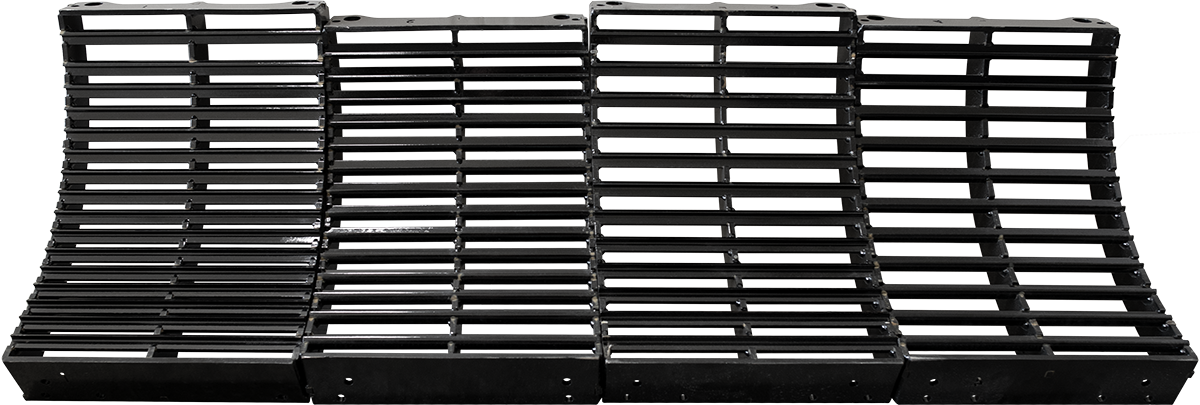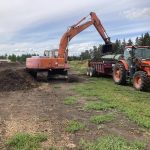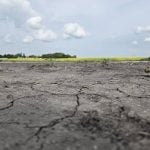Cool, damp conditions in central Alberta earlier this year caused an upswing in the number of reports of downy mildew, Kan-Fa Chang, a plant pathologist with Alberta Agriculture said in a News release
news.
Agrologists reported a moderate degree of infection, but Chang expected damp weather would increase disease severity.
The disease has the potential to cause significant crop losses in Western Canada’s pea growing areas.
The disease has been recorded in central Alberta every year since 2004. A high incidence of the disease was found in the Fort Saskatchewan and Namao areas in 2004 and 2005, as well as the Penhold area in 2005.
Read Also

VIDEO: Green Lightning and Nytro Ag win sustainability innovation award
Nytro Ag Corp and Green Lightning recieved an innovation award at Ag in Motion 2025 for the Green Lightning Nitrogen Machine, which converts atmospheric nitrogen into a plant-usable form.
In 2006, the disease occurred in 34 of the 78 fields surveyed and was less prevalent and evenly distributed throughout the fields than in 2005, due to dry weather conditions, Chang reported in the release.
Downy mildew is a fungal disease in peas. The fungus overwinters for many years on infected seeds and plant debris and in the soil, making it difficult to control.
Systemic infection of seedlings causes severe stunting, floral sterility or even plant death causing considerable yield losses in pea crops. Downy mildew has been identified as a limiting factor for pea production in the United Kingdom and southern Australia.
Kurt Lindbeck, an agronomist from the Australian state of Victoria, said downy mildew is one of the most common fungal diseases of peas in his area, often causing substantial reduction in plant numbers in cool wet seasons.
The disease is most common soon after seedling emergence but may affect plants at any stage of growth during periods of moist, cool weather.
Plants sown with infected seed are a sickly yellowish-green and severely stunted and distorted.
The undersides of the leaflets are covered with a fluffy mouse-grey spore mass. Infected plants may turn yellow while producing spores that cause secondary infections.
Secondary infection results in the appearance of isolated greenish yellow to brown blotches on the upper surface of leaves, while masses of mouse-grey coloured spores can be found directly under these lesions on the lower surface.
The fungus usually affects the lowest leaves and then progresses up the plant, sometimes infecting flowers and pods.
Infected pods are deformed, covered with yellow to brownish areas and superficial blistering.
While the disease causes most damage by stunting plants early in their growth, it also impairs formation of wax on the leaves and makes plants susceptible to herbicide damage.
The disease can develop quickly when conditions are cool (5 to 15 C) and wet for four or five days, especially when seedlings are in the early vegetative stage. Rain is the major means of spore dispersal and infection.
Heavy dew will promote release of spores. Dry, warm weather is unfavourable for the disease. Systemic infection of plants can lead to the disease developing late in the season under favourable conditions.
Chang said cultural practices such as clean seed, long rotations of up to five years between pea crops and deep tillage will reduce downy mildew incidence. Deep seeding can encourage higher disease incidence.
No cultivar screening trials have been conducted in Canada, but among the cultivars available in Canada, Eiffel was one of the least susceptible in British trials, according to Chang.
Use of metalaxyl as a seed treatment has been shown to reduce downy mildew incidence in the U.K. and Australia, he said.
While no foliar fungicide is registered for controlling the disease in Canada, BASF has been trying to collect local data on Headline.
“Downy mildew is a disease in peas that’s pretty rare, but this is a year where there’s been a lot of talk about it,” said Mark Shillingford, BASF’s market manager for fungicides in
Canada. “I used to be a rep in the Lloydminster-Vermilion area and in 2004 there was a downy mildew outbreak then, too.”
Shillingford said he knows Headline works on the disease, but to get registration in Canada, the company needs to show a certain amount of data generated in Canada.
“It’s not like mycosphaerella in peas. You get that pretty much every year. But this isn’t a disease you get every year, so it’s hard for us to generate data in Canada that shows Headline is working, even though we know it does because it’s on our U.S. label. It’s just one of those diseases that’s hard to get, but we are exploring adding it to the Canadian label,” he said.
“It’s a pretty robust data set that we need to generate, and that’s a good thing because it will show it’s consistent. But we need a lot of years like we had this year to give us enough data that we need.”
Shillingford said of the major fungal diseases in peas, mycosphaerella usually appears first, then powdery mildew and finally downy mildew.
“If farmers sprayed their peas with Headline for other diseases, such as powdery mildew or mycosphaerella, they would get some control of the downy mildew. The only concern would be timing. The emergence of downy mildew is weather dependent.”
Shillingford said powdery mildew thrives in hot days and cool, dewy nights, while mycosphaerella likes warm, humid days and humid nights, which means the two diseases don’t appear together.
“Downy mildew is more of a moisture loving disease, so typically if you’re going after myco, you will get downy mildew as well, if you’re lucky and the timing coincides. But with any fungicide, you’re going after preventative applications,” he said.
“It’s better for farmers to time their application for mycosphaerella, as they’re almost guaranteed to have that, but they’re not guaranteed to have downy mildew.”
Shillingford said Headline treated plants tend to stand up better because the fungicide controls mycosphaerella, which tends to girdle the stem at the base.
“That helps harvestability, but it also helps limit other diseases. With less lodging you’ve got more air flow through the canopy. If you’ve got more air low there’s a greater chance for it to dry and less chance of downy mildew showing up.”















